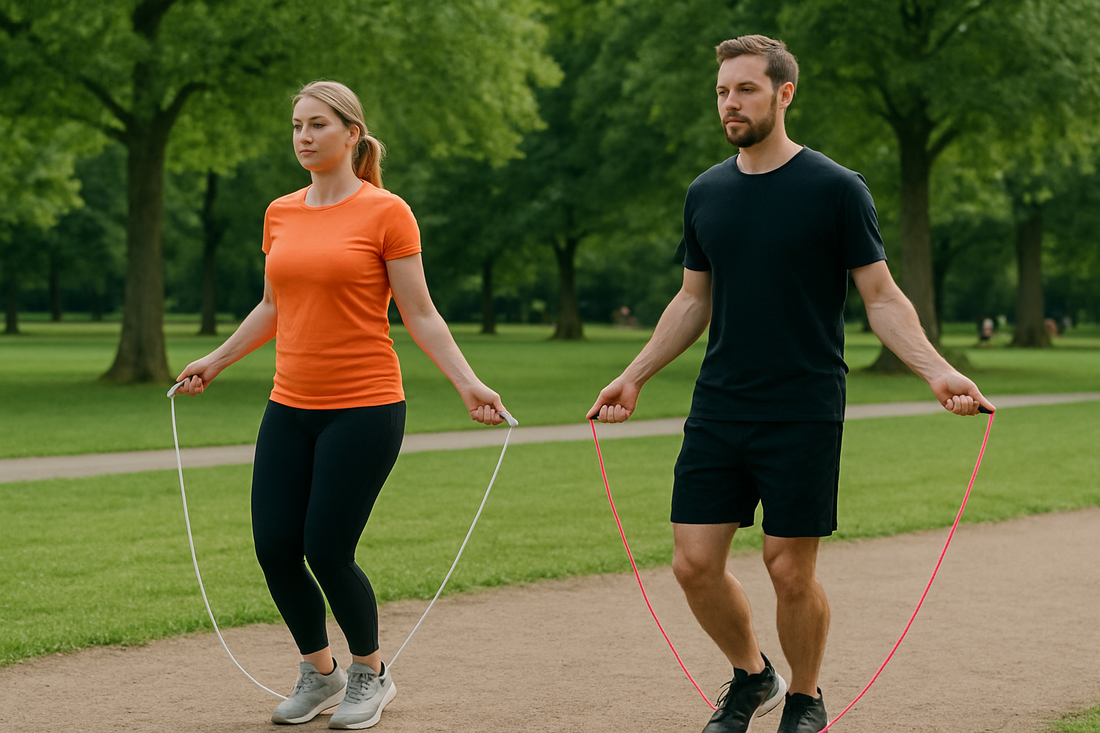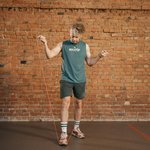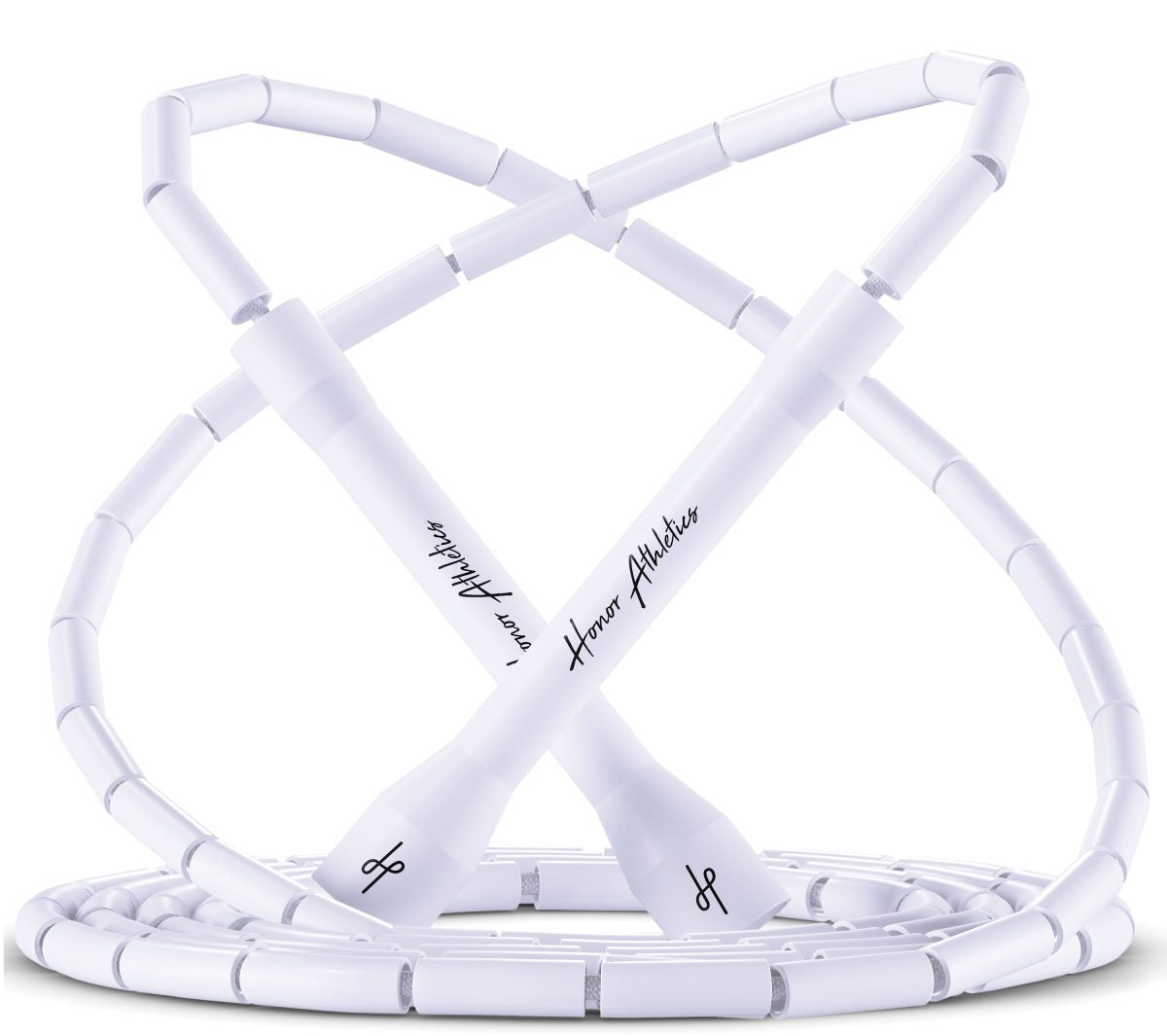
Pain-Free Jump Rope Guide
9 Smart Ways to Prevent Injuries While Jumping Rope
Jumping rope is a powerful full-body workout, but doing it wrong can lead to ankle sprains, shin splints, and joint strain. Learn how to protect your body with these 9 science-based tips and make your workouts safer, more effective, and pain-free.
Jumping rope isn’t just for kids — it’s a serious cardiovascular workout used by boxers, runners, and fitness lovers around the world. But like any high-impact exercise, doing it incorrectly can lead to injury. From ankle sprains to shin splints and knee pain, common mistakes can quickly turn a fun routine into a painful setback.
In this article, we’ll walk you through 9 essential strategies to avoid injuries while jumping rope so you can train smarter, longer, and more confidently.

1. Start With the Right Rope 🤛🏻
The first step in injury prevention is choosing the correct rope length and style. If your rope is too short or too long, it can throw off your timing and place extra stress on your joints. To check your rope length, stand on the middle of the rope and pull the handles up— they should reach your armpits.
Pro Tip: Lightweight speed ropes are great for cardio and rhythm, while weighted ropes build strength and stability.
2. Never Skip the Warm-Up 🔥
Warming up increases blood flow, activates muscles, and prepares your body for impact. This is especially important for the calves, ankles, and knees.
Try This Quick Warm-Up:
- 2–3 minutes of light jogging or marching
- Ankle circles and leg swings
- A few gentle hops in place
3. Choose the Right Surface ⚡
Hard surfaces like concrete put excessive stress on your joints and bones, especially your shins. Whenever possible, jump on wood floors, padded gym mats, or rubberized surfaces to absorb impact and reduce injury risk.

4. Mind Your Form and Footwork 💪🏻
Proper form keeps your body aligned and reduces joint strain. Always keep your knees slightly bent and bounce gently on the balls of your feet. Avoid landing on your heels or jumping too high.
Good Posture Checklist:
- Slight bend in knees
- Chest up and back straight
- Elbows close to the body
- Eyes forward
5. Wear Supportive Shoes 👟
Barefoot jumping or flat, unsupportive shoes can increase the risk of ankle sprains and shin injuries. Choose athletic shoes with good arch support and shock absorption to protect your joints.
6. Increase Training Time Gradually 🫵🏻
Doing too much too soon is one of the top causes of shin splints and joint strain. Beginners should start with short sessions (2–3 minutes at a time) and gradually increase duration and intensity over weeks.
Progression Tip: Add 1–2 minutes per week and listen to your body.
7. Stretch and Cool Down 💥
Stretching helps with recovery and reduces tightness that can lead to overuse injuries. Focus on calves, hamstrings, and ankles post-workout.
Sample Cool Down:
- Calf stretch against a wall
- Hamstring stretch seated or standing
- Deep breathing and ankle mobility drills

8. Focus on Efficiency, Not Height 👌🏻
You don’t need to jump high to be effective. Excessive height during jumps increases stress on knees and ankles. Aim for small, quick hops about 1–2 inches off the ground.
9. Listen to Your Body 🏆
Soreness is normal—sharp pain is not. If you feel persistent discomfort in your shins, knees, or ankles, rest and evaluate your technique. Never push through injury.
When in doubt, consult a physical therapist.
Train Smart, Stay Safe
Jumping rope is one of the most efficient and enjoyable ways to stay fit, but like any workout, it comes with risks when done carelessly. By following these nine injury-prevention tips, you can jump with confidence, protect your joints, and keep progressing toward your fitness goals.
So grab your rope, warm up properly, and take your workouts to the next level — without the setbacks.
Prev post

8 Muscles, One Rope
Updated on 24 July 2025
Next post

How Jump Rope Boosts Your Mental Health
Updated on 09 July 2025



